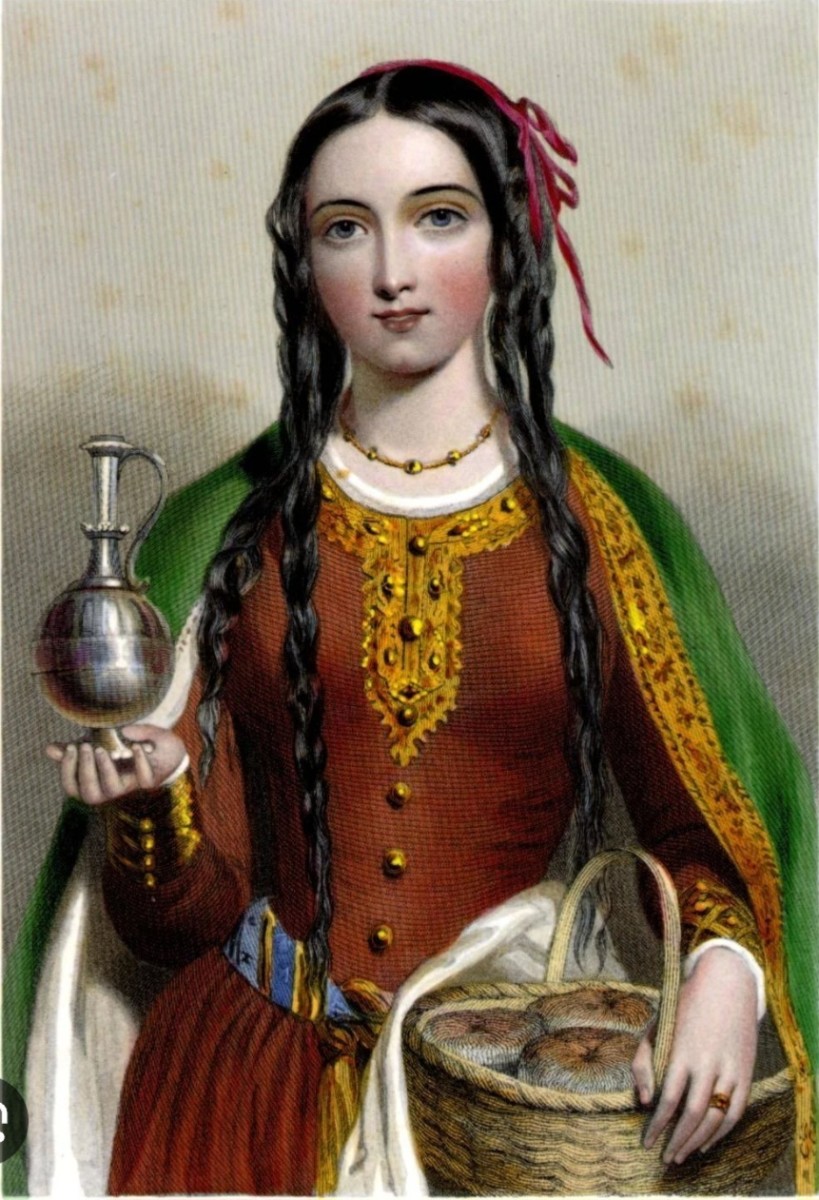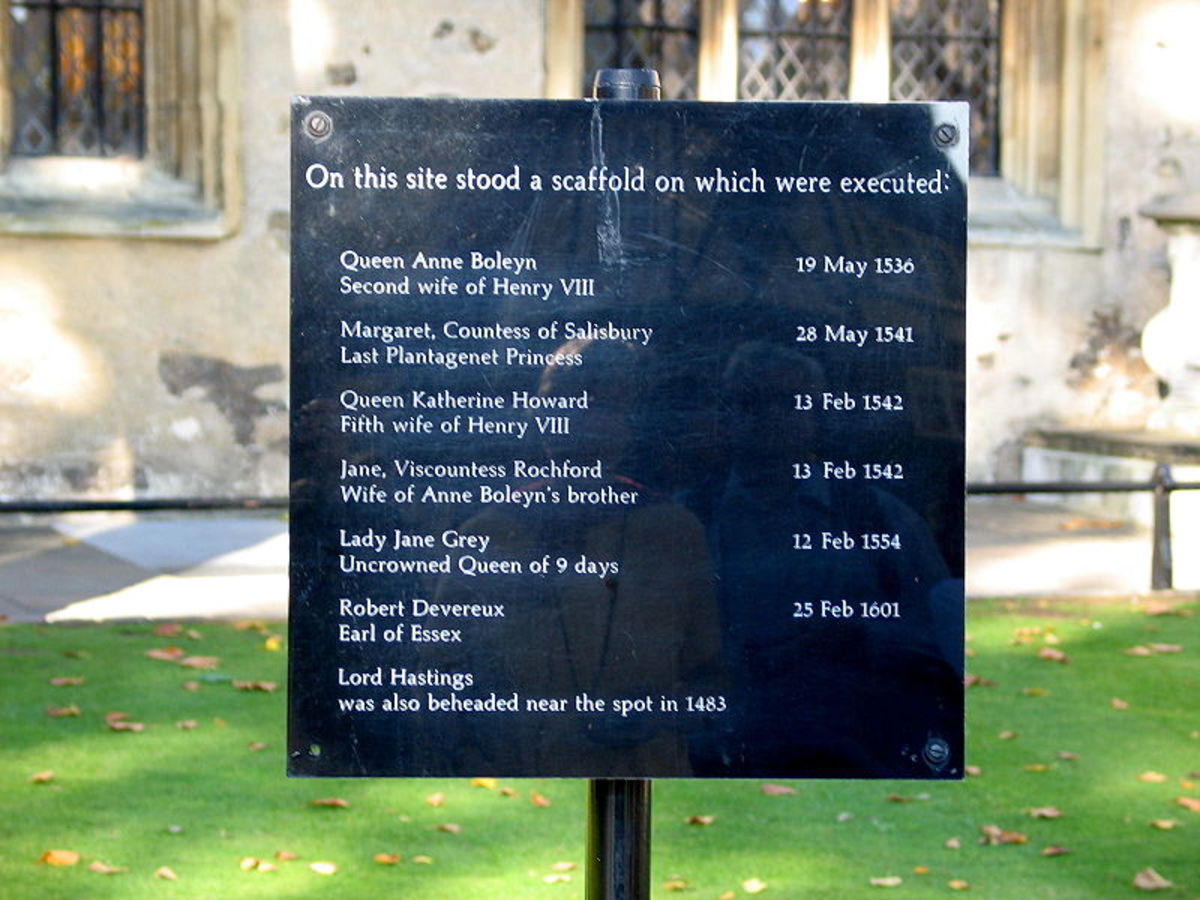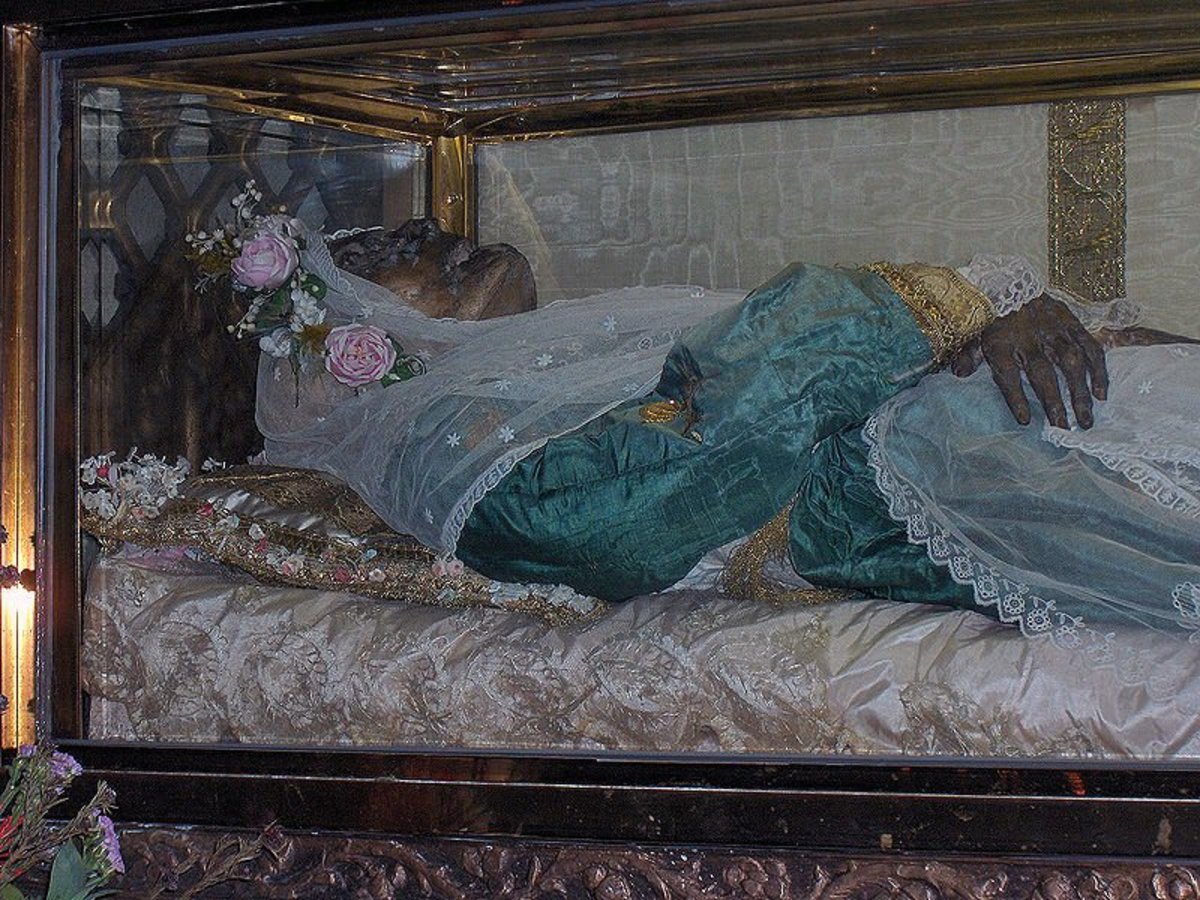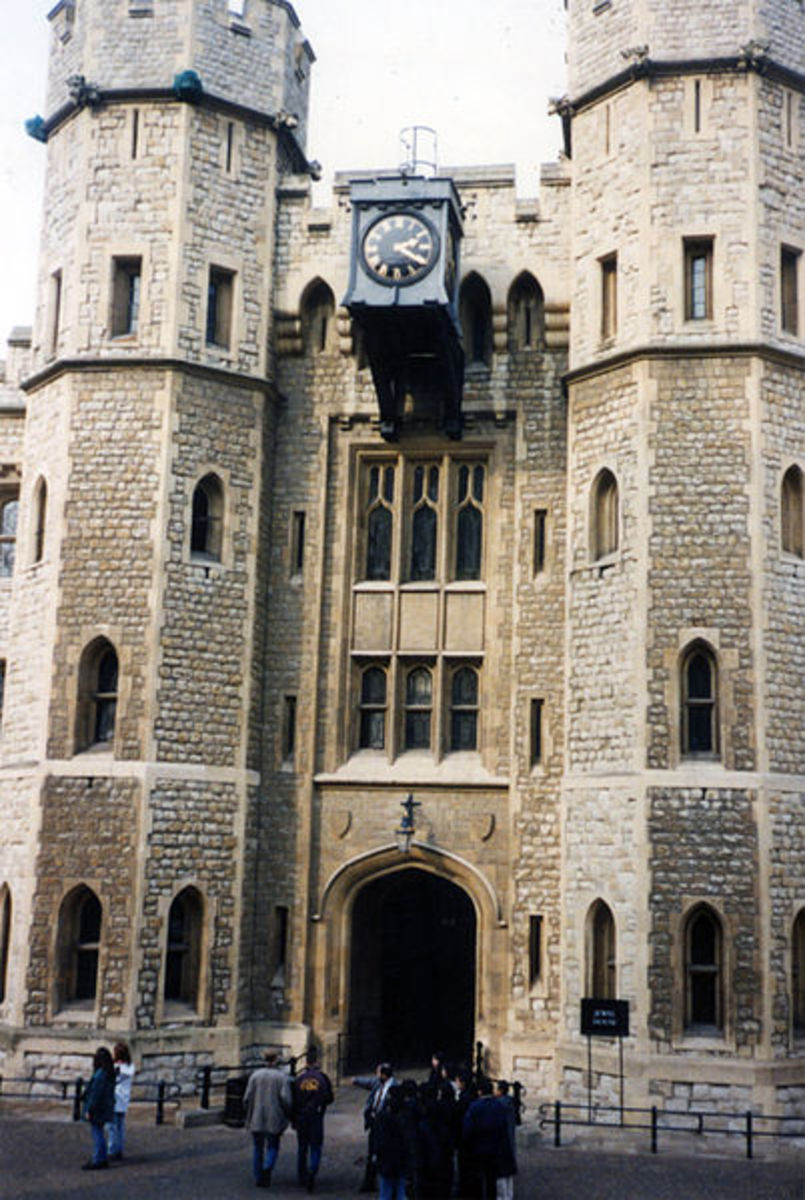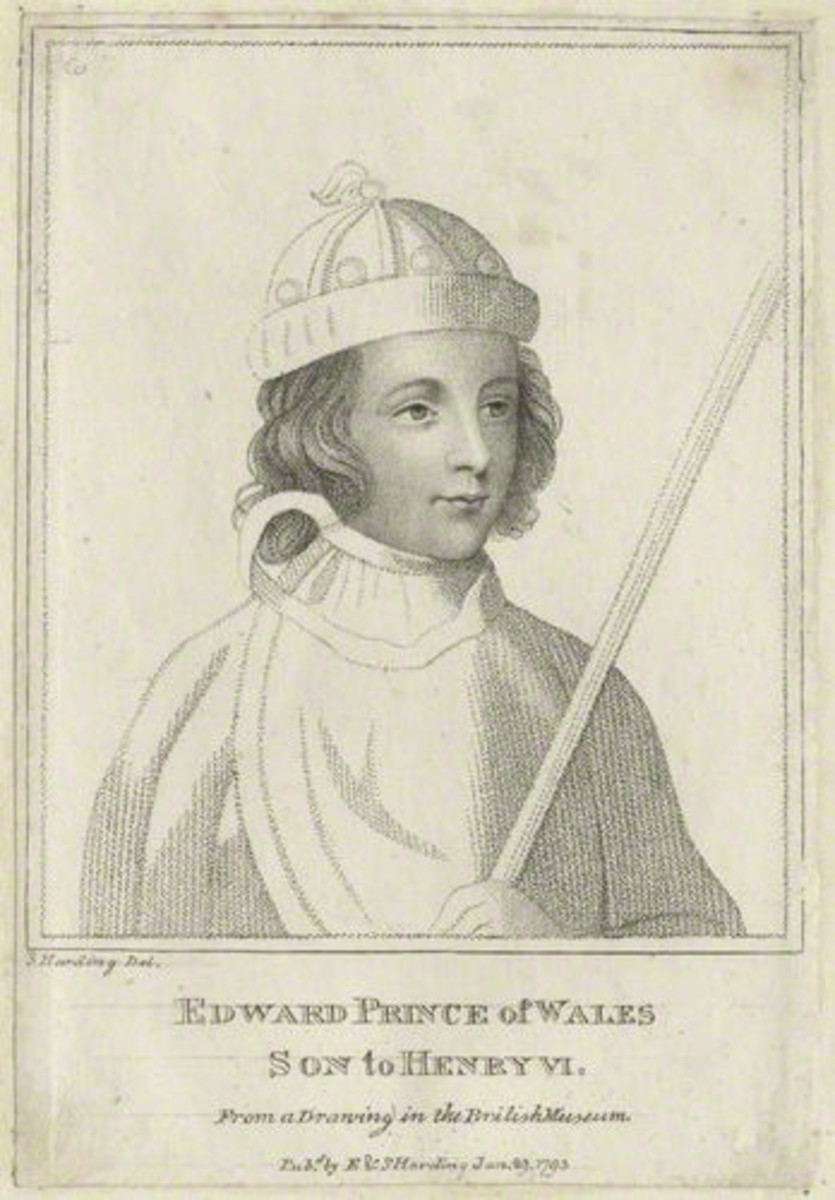The Executions of Guildford Dudley and Lady Jane Grey
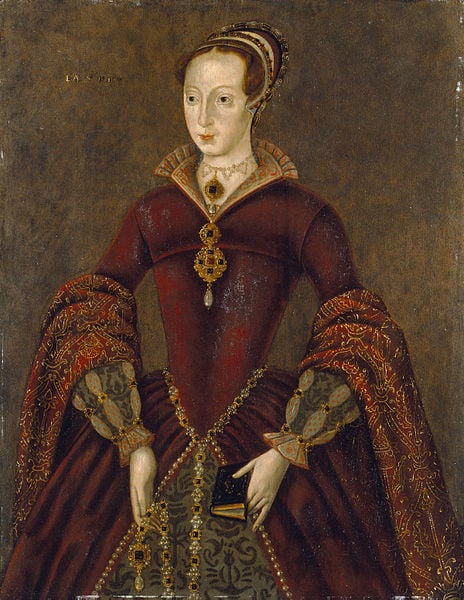
On February 12, 1554, two people were executed. First it was Guildford Dudley, the son of John Dudley. The second was the Nine Day Queen, Lady Jane Grey, Guildford’s wife and the cousin of the monarch at the time, Mary Tudor. Why exactly were they executed and what were the events leading to their deaths?
A Decision Made by King Edward VI
In 1553, Edward VI knew that he was dying. He needed to make the decision over who would become his heir. According to Henry VIII’s last will and testament, it was to be Edward’s half-sister Mary since he had no children of his own. There was one major problem for the young king. Mary was a strict Catholic while Edward was a Protestant. All the hard work that Edward had done to ensure England moved full in the way of the religious reformation would be for nothing if she ascended to the throne.
Edward needed someone else, a Protestant. While his other half-sister Elizabeth seemed like a good choice, there was another issue. Elizabeth was illegitimate; just like Mary. Illegitimate children of the king could not become monarchs, but Henry VIII changed that by making it clear in his will that his daughters would become queens should Edward and then Mary fail to provide any heirs.
Of course, King Edward also have the old-fashioned view that women could not rule in their own right. It had never been tested except for Matilda who was not a good queen. Edward needed someone who was a Protestant, legitimate and preferable male. There wasn’t anyone who fit all three, but there was someone who fit the first two: his cousin through his Aunt Mary Tudor’s line, Lady Frances Grey. Frances was much older than Edward, though, and had finished having children. She only had three girls: Jane, Katherine and Mary.
After much inner-discussion and some discussion with his government, Edward decided that Frances’ eldest daughter would succeed to the throne. Lady Jane Grey would become the next Queen of England.
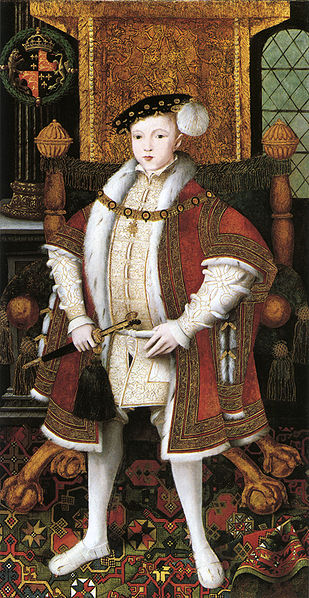
Lady Jane Grey and Guildford Dudley Marry
Edward’s Lord Protector at the time, John Dudley, wanted to make sure his family gained from his position. One of the first things he did was to arrange a marriage between Lady Jane Grey and his own son, Guildford Dudley. It wasn’t the best match for Jane, but her parents allowed it in the end.
The couple married on May 21, 1553, setting up the events that would lead to their downfall. Of course, with this marriage in place, John wanted his king to change the line of succession. He helped Edward see that neither of his sisters could become queen—they were illegitimate and the English people would not support that.
However, Mary was not going to let go of the crown easily, and Edward knew this. He had to create an Act for Parliament to sign, that would make his intentions clear. He had every right to change his father’s line of succession, but he still had to do it in the right way.
What do you think?
Should Mary have let Jane live?
Lady Jane Grey Becomes Queen of England
On July 10, 1533, Jane Grey was proclaimed the Queen of England. John Dudley had one task: capture Mary Tudor to prevent her from reaching London. However, he failed to do that and Mary managed to reach London, with Elizabeth Tudor and many English supporters. They wanted the daughter of Catherine of Aragon on the throne, seeing her as the rightful queen.
Jane Grey lasted just nine days after her coronation. On July 19, Mary deposed her “traitorous cousin” and sent her to the Tower of London to await trial. Jane’s husband, father-in-law and own parents were also arrested for their crimes. However, her parents were allowed to leave the Tower of London after Mary decided they had very little to do with the plan.
In fact, despite being found guilty of treason, Mary was relatively lenient when it came to Jane and Guildford’s punishment. She decided that John Dudley was the man who had put the plot in place and had him executed right away. Jane and Guildford were held in the Tower of London indefinitely. So, what led to their executions on February 12, 1554?
The Wyatt Rebellion and Lord Henry Grey
In January 1554, the Wyatt Rebellion took place. Jane and Guildford had nothing to do with the rebellion, but it would prove to seal their fates. It was just before this that Queen Mary had made her intentions of marrying Philip II of Spain very clear. She wanted a Catholic marriage, but many people in England feared that.
Why would that affect Jane? Because her father, Lord Henry Grey, and his two brothers joined Sir Thomas Wyatt the Younger in the rebellion. When they were caught, Mary realized that there were too many people who could possibly use Jane as a pawn for their rebellions. She needed to stop them and the only choice was to execute her young cousin. The execution date for the 16-year-old and her husband was set for February 9, 1554.
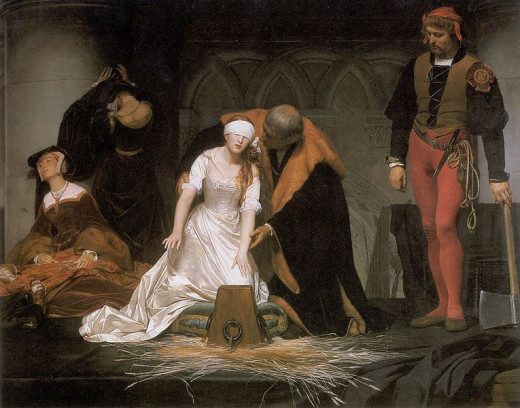
Postponing the Execution of Lady Jane Grey
The execution was postponed by three days. Jane was a Protestant but Mary believed it was right that her cousin should have the chance to convert to the “true religion.” She did not want to see Jane go to Hell because of the beliefs she had been raised under.
Jane refused to convert to the Catholic religion, but became friends with Mary’s chaplain, John Feckenham. He would accompany her to the scaffold when it was time for her execution.
Guildford Dudley was the first to be executed. He was taken to Tower Hill and executed in public, and then a horse and cart brought his remains back to the Tower. They would have passed Jane’s rooms, so she would have seen the remains of her husband.
Jane was then taken to Tower Hill and gave a short speech to the people. She turned to the executioner and asked if he would execute her before she had the chance to lay her head on the block. When he confirmed he wouldn’t, she tied her blindfold and knelt. However, she was left in a state of panic when she misjudged her distance from the block. She cried out “What shall I do? Where is it?” A bystander helped her to locate the block and she was able to lay her head on it and wait for the execution to do his job.
Her father was executed just 11 days later. Jane’s mother never suffered the same fate. In fact, Queen Mary pardoned her and Jane’s younger two sisters, and they were allowed to live at court. Frances Grey ended up remarrying but died in 1559; just getting the chance to see Queen Elizabeth I ascend to the throne.




